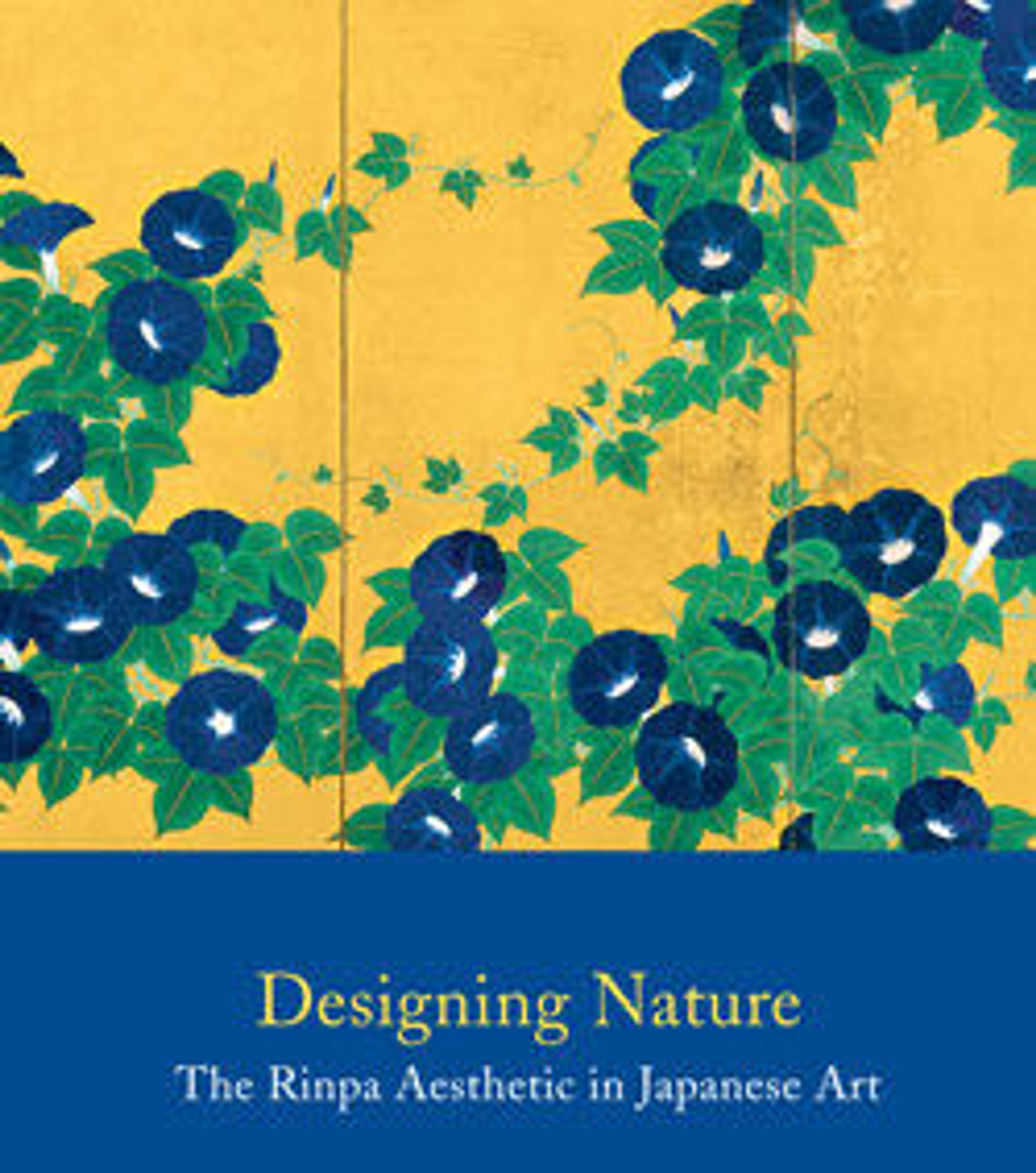Autumn Trees and Grasses by a Stream
The gently meandering stream, flowing through time and space, is unpainted except for the lines of ink that accentuate its softly curving form. A single clump of red azalea contrasts with the intense green of the pines. A glimpse of cherry blossoms in evanescent glory before they scatter on the stream marks the peak of spring, while the mountain rose (kerria) on the far bank betokens its passing.
The stream flows into autumn on the left screen, through sunlit plumes of grass and huge, already brown leaves on a magnolia tree that all but obscures the bending forms of flowering bush clover and chrysanthemum beyond. To the left, golden ginkgo leaves shimmer in the late afternoon light with bold red and white maple leaves.
The painting encapsulates stylistic features of Rinpa artists across a couple of generations, beginning with Tawaraya Sōtatsu in the early seventeenth century, and extending to Ogata Kōrin and anonymous Rinpa artists working in his wake.
(One of a pair; see 49.35.2)
The stream flows into autumn on the left screen, through sunlit plumes of grass and huge, already brown leaves on a magnolia tree that all but obscures the bending forms of flowering bush clover and chrysanthemum beyond. To the left, golden ginkgo leaves shimmer in the late afternoon light with bold red and white maple leaves.
The painting encapsulates stylistic features of Rinpa artists across a couple of generations, beginning with Tawaraya Sōtatsu in the early seventeenth century, and extending to Ogata Kōrin and anonymous Rinpa artists working in his wake.
(One of a pair; see 49.35.2)
Artwork Details
- 渓流春秋草木図屏風
- Title: Autumn Trees and Grasses by a Stream
- Period: Edo period (1615–1868)
- Date: late 17th–early 18th century
- Culture: Japan
- Medium: One of a pair of six-panel folding screens; ink, color, gold, and silver on paper
- Dimensions: 48 in. x 10 ft. 3 in. (121.9 x 312.4 cm)
- Classification: Paintings
- Credit Line: Rogers Fund, 1915
- Object Number: 15.127
- Curatorial Department: Asian Art
More Artwork
Research Resources
The Met provides unparalleled resources for research and welcomes an international community of students and scholars. The Met's Open Access API is where creators and researchers can connect to the The Met collection. Open Access data and public domain images are available for unrestricted commercial and noncommercial use without permission or fee.
To request images under copyright and other restrictions, please use this Image Request form.
Feedback
We continue to research and examine historical and cultural context for objects in The Met collection. If you have comments or questions about this object record, please complete and submit this form. The Museum looks forward to receiving your comments.
